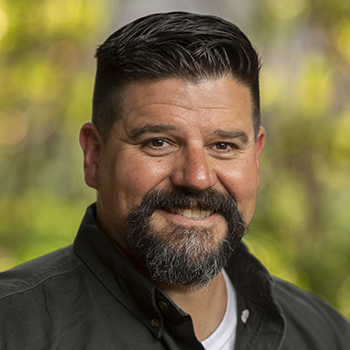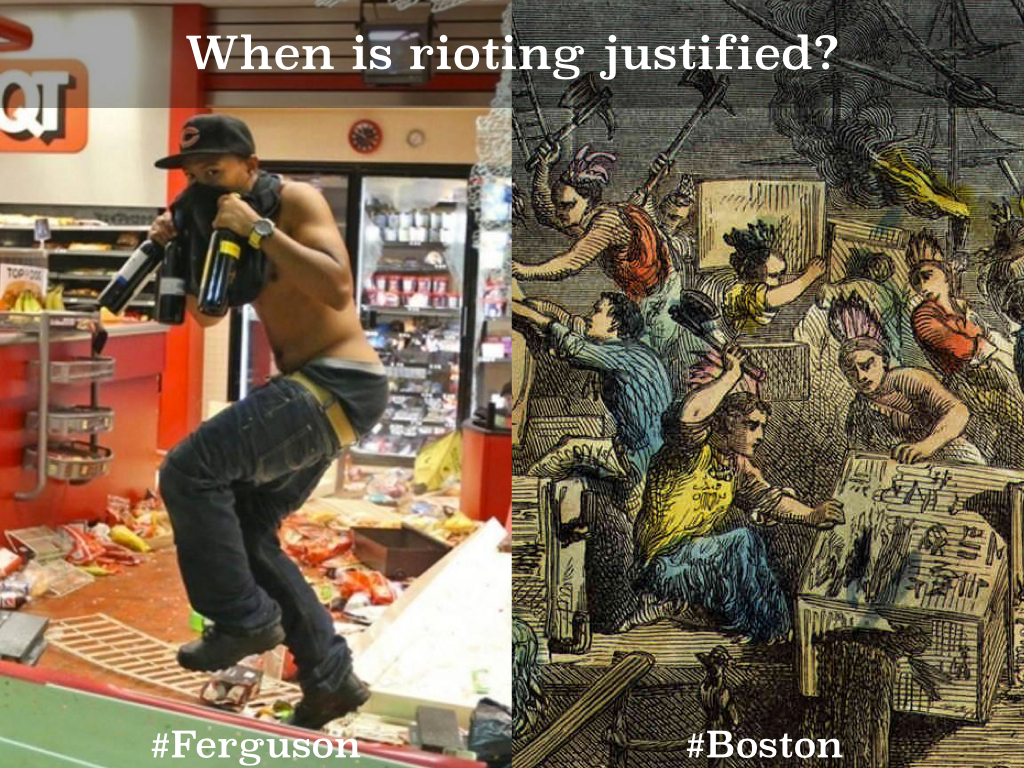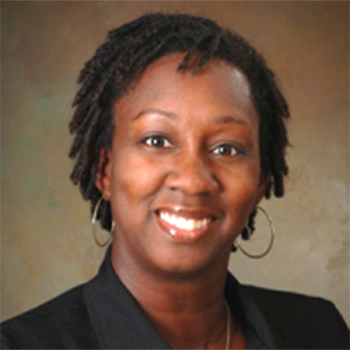This guest post by Jim Bentley is the second post of the new Caucus Series: “Everybody’s talking about it at home, but nobody wants to talk about it at school.” Check out these links for the continued conversation about how to be an antiracist in the classroom.
- 1st post Why I’ve been Afraid to be Antiracist
- 3rd post 22 Antiracist PBL Ideas
Californio, not Mexican
I’m a white, cisgender heterosexual male who turns 50 this year and can now say for half my life I’ve worked as an educator of children. This is my story of self education with the help of others so that I can contribute on a daily basis to the antiracist work that must be done.
Throughout my early childhood up until the time I left to go to college, I gathered narratives from various family members which helped me construct a narrative of where I come from, who I am, and where I hoped to go in life. I never realized childhood stories shared by racist relatives could so thoroughly insulate and immunize me from understanding racism which I’ve come to see and recognize in my adult life with greater clarity over the past 5 years and with urgent alarm in the first half of 2020.
From my maternal grandmother I learned my great-grandmother had immigrated from Portugal to the United States in the early 1900s. She was sent to America as part of an arranged marriage. My grandmother–like her own mother–never completed more than a few years of elementary school. My maternal grandfather loved Portuguese jokes and never missed a chance to share one loudly and publicly often at my grandmother’s expense. It was ironic that she, a voracious reader, had long-ago embraced the notion of self-directed learning and was much better educated than her husband who had completed high school. His pride came from his ability to boast how our earliest ancestor to settle in California was a soldier on one of Juan Bautista De Anza’s expeditions into the present day United States.
We were Californios, he would say. Our ancestors came to California from Spain by way of Mexico. They were caballeros on ranchos, conquistadors on horseback. Not Mexicans, mestizos, or indios. I can clearly see now that my grandfather, a brown man who looked very much like the Mexican-Americans who lived in our community, was being racist when he made these distinctions accompanied by his judgements.
When my first daughter was born in 2003, I tried to add “Californio” to her birth certificate in the hospital. I later had to resubmit the form when I was told there was no such category. Had my grandfather been alive, I’m certain he would have violently disputed that claim.
It seems a bit of my grandfather’s pride had been hiding somewhere deep inside my subconscious.
On my dad’s side of the family, my paternal grandfather shared stories about ancestors who worked as “slave breakers” on plantations in Georgia. One of my grandfathers from several generations back had supposedly been suckled by a Black nanny.
As a child, I listened to the elders in my family as they shared their stories. I recall questioning them and receiving responses like, “Those were different times” or “Things were different then.” -allying with the past; Deflecting from the real question. It was the behavior I saw modeled as a child. I didn’t realize then how such practices are vain attempts to shroud racism with the cloak of antiquity like that sinister phrase, “Heritage, not hate.”
Why such stories would be shared from generation to generation had escaped me as a child. But I know why now. My family was racist.
Defining Racism
My understanding of racism as a child growing up in a predominantly white community was incomplete. My white family clearly didn’t teach me about racism. They didn’t teach me about the privileges and benefits I received as a condition of my whiteness. My family helped safeguard my white fragility, because in doing so they guarded themselves as well. My family would say they worked hard to make a living as ranchers, construction workers, as law enforcement officers, nurses, cooks, and mechanics. They didn’t see themselves as fragile or privileged. I know now they just didn’t understand what white privilege means.
My white teachers in kindergarten through high school didn’t teach me about racism. I was taught that Black leaders in the Civil Rights Movement were murdered by crazed individuals who were motivated by hatred or ignorance. The lesson learned: racism is acts of overt violence committed by hateful, ignorant, bad people. Avoid those behaviors, and you’re not racist.
I did not learn that racism was about wielding power to benefit some while maintaining a system of oppression over others at the time.
My training on racism had been nonexistent in college. It’s ironic that my degree emphasized “Cross-cultural studies,” yet I was ignorant of what implicit bias was or how racism can manifest itself in subtle and insidious ways in addition to dramatic assassinations or overt racial policies such as apartheid or segregation.
Racism was absent during my teacher credentialing program. Race and racism were not topics of professional development in any of the school districts in which I’ve taught. Even up to this day.
Racism, I’ve come to learn, is expressed in policies and laws meant to advantage some over others, and each of us have a role to play in dismantling it. This “Racism scale” created by C. Demnowicz is a graphic on which to reflect and to measure ourselves.
For years, I took solace telling myself that at least I was not a racist. I was not contributing to the problem of racism, because I was a good person who treated people equally. I didn’t realize that mindset was silent complicity.
Waking Up
And then a little over five years ago, PBLWorks, a Project Based Learning organization I work with, began to emphasize equity as a critical element in our internal professional development and for the trainings we facilitate with adults. This marked the start of my deep exploration into working with students of color in a way that was more than simply “tolerant” or showing an “understanding” of racial and cultural differences.
I–like many other white educators–began to read about how to counter inequities caused by bad school systems, wittingly or unwittingly perpetrated by systemic policies or individual teacher practices. The focus of many of these books or posts was on the students, building a space in which students can learn. Emphasis was placed on leveling the playing field in terms of socioeconomic challenges, on “achievement gaps” that arose due to myriad factors. Positive Behavior Intervention Supports (PBIS) often surfaced in these readings, and much was said about new systems to put in place to make kids feel welcome. Addressing race head on was not something I saw.
I invested in countless books on pedagogy and read blog posts and sought information on culturally responsive teaching. Of course, the texts reinforced the context that I–the white educator–was the engineer of the space and learning experiences where I would make my students–especially my students of color–feel comfortable so they could learn what was on my syllabus which had been created by mostly white educators and legislators and deemed valuable. I was learning a lot, but I still had a professional blind spot as big as a house when it came to anti-Black racism.
White Fragility
As I learned more about equity, I also began a more systematic and frequent check of my own attitudes and behaviors. I began to cultivate new friendships with educators of color and engage in discussions with them and other white educators about this equity work and how it connects to race. These early discussions quickly demonstrated to me how little I knew about race which prompted a new round of book buying and reading. This time, I sought books by Black educators written to help struggling white educators like me.
In 2019, I’d heard about Robin Diangelo’s book on white fragility, so I bought it. I had heard the term before and watched it trigger some white people I knew instantly. It only took a couple of chapters before I felt like John Belushi in that one scene in The Blues Brothers as he stands in a Black church and proclaims to the congregation he has seen the light.
Diangelo’s book finally helped me understand how I as a white person have navigated the perpetual news cycle where unarmed Black lives were murdered at the hands of white armed police. Each instant was tragic, fleeting, and then just as quickly pushed into the past. I mourned briefly alongside so many other white people and then put these news stories behind me because my white privilege was busy insulating itself from racial discomfort. I was centering myself in the story. I wanted to avoid the pain caused by the tragedy, so I perceived each incident in isolation, never once thinking to connect the dots and allow a pattern of oppression to emerge. Each death was its own tragedy. The characters were well known: A bad cop. An unfortunate Black body in the wrong place at the wrong time.
These were of course white excuses to explain the situation to myself rather than confront the real problem of racism. Diangelo helped me understand how my family, my teachers, my professors were able to not talk about race throughout most of my life. They were white and avoiding the discomfort of direct dialogue. It was so commonplace a practice that it was invisible to me and likely to them as well I imagine.
Antiracism
The very same day I finished Diangelo’s book, I began reading Dr. Ibram X. Kendi’s book on becoming antiracist. I purchased the audio book, and listened as Dr. Kendi talked directly to me. At least that’s how it felt. Early in the book he shook me into a new level of consciousness.
I’m not racist.
He addressed the very phrase I had clung to my entire life and exposed it for what it was. An excuse to be passive because it fostered the perception that racism was a problem for people of color and not for people like me who don’t actively perpetrate overt racist acts. Racists were loud and violent. Racists were “bad people.” I wasn’t like that.
But my inaction was itself an act of complicity, and Kendi helped me understand that.
I learned that racist power can be wielded between groups and within groups. I’ve learned that policies and systems of governance are instrumental in oppressing and continuing the colonization of Black bodies. I’ve learned that claims of a “broken system” ring hollow when the system was never engineered to be equal for all from the start.
Reading Kendi and Diangelo have pushed me to further and deeper evaluation of my own dispositions and actions and the behavior and speech of others. Most days I now feel like Nemo in The Matrix after having taken the red pill and seeing the world for what it really racially is.
One of those red pill moments for me came on June 6, 2020, when Trevor Noah tweeted a video of Kimberly Latrice Jones in which she framed protesters, rioters, looters, and property damage in the context of the game Monopoly. It took her just 6 minutes and 39 seconds to make crystal clear for me the emotion behind protests that drew rioters and looters into the fray. I was familiar with the all-too-common white reaction: focus on the property damage and violence of protests to such an extent that attention to the root cause is lost upon them. Dismissing the protest as violent lawlessness, whites then lose sight of policies and laws that must be changed to address the racist injustices that spawned the unrest.
I saw this in the 1992 L.A. Riots. I’ve watched this during the protests and civil unrest in 2020. But now, thanks to Kimberly Latrice Jones, I have a better understanding of how to frame for my white friends and family the anger behind destruction of property.
Beyond Woke
While I could never claim to know the world from a Black perspective, I’ve learned it’s my obligation to try and better understand it. A scan of my Instagram and Twitter several months ago revealed to me that I follow a lot of white folks and am followed by a lot of white folks. I’ve changed that. Daily, I see images and videos and thoughts shared by Black folk that give me insight into their lived experience. I’ve learned from social media what “performative allyship” is and have spotted it posted many times by white folks I know.
I’ve listened to Black voices and have shared what I’ve learned with other white folk who are grappling with understanding issues of race. I’ve donated money to Black causes, spoken out against anti-Black racism, and am viewing everything I do and say as an educator with a racial lens. And I have reached out more frequently to my Black friends and colleagues who I trust and love and admire. While we talk about issues related to race, I also try to make a point to talk about other things as well, the things that matter to each of us.
I’ve always valued learning and education. My parents were educators. I am an educator. I am curious by nature, but I’m learning about racism by choice.
I was embarrassed when I realized I didn’t fully understand what it means to be white even though so many BIPOC did. I felt embarrassment when I began to understand my white fragility and unwitting complicity with a system of oppression that has been inflicted on BIPOC for centuries.
I’m now aware that embarrassment is a comfortable excuse for white inaction.
And as a white male who is better understanding his privilege, I’m willing to be vulnerable as I continue my education of what it means to be an authentic ally and to engage in antiracist work on a daily basis.
Rather than “not be racist,” I challenge white educators to be reflective and actively consider the questions posed in this tweet from Shana V. White. Connect with me @Curiosity_Films on Twitter to share your journey, your questions, your answers.



